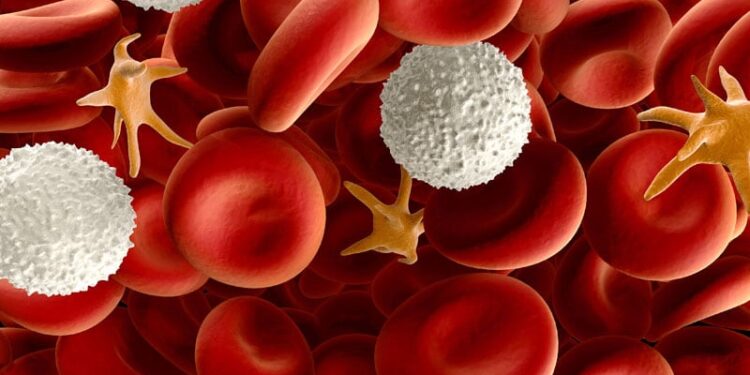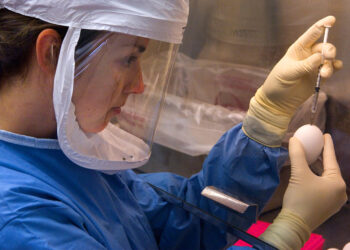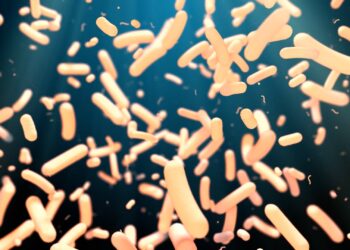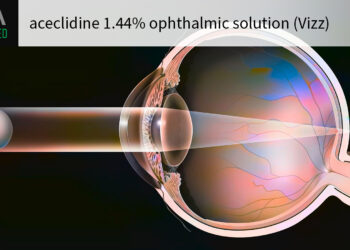TOPLINE:
Researchers in Japan showed that a unique neutrophil subset, characterized by type II interferon signature genes (T2ISG), along with elevated levels of interferon gamma in the blood, can predict the risk for relapse in patients with new-onset microscopic polyangiitis (MPA).
METHODOLOGY:
- Researchers conducted single-cell transcriptome and surface proteome analyses of peripheral white blood cells from patients with new-onset MPA to study neutrophil dynamics in antineutrophil cytoplasmic antibody (ANCA)–associated vasculitis.
- They collected 179,664 peripheral white blood cells from six patients with new-onset MPA (three women; average age, 74 years) and seven healthy donors (four women; average age, 67 years). Patient samples were taken before starting immunosuppressive therapy.
- Interferon gamma concentrations in the serum were measured for 37 patients with MPA, of whom 24 had new-onset disease and 13 had started receiving treatment.
TAKEAWAY:
- Compared with healthy donors, patients with MPA showed higher proportions of two distinct neutrophil populations: Immature neutrophil and T2ISG neutrophil populations. Certain differentially expressed genes in the neutrophils of patients with MPA vs healthy donors were linked to interferon gamma signaling.
- The T2ISG neutrophil subset differentiated from mature neutrophils upon stimulation with interferon gamma and tumor necrosis factor. This subset was characterized by the surface exposure of pathogenic molecules that may contribute to neutrophil-mediated inflammation in MPA.
- Of the six patients with new-onset MPA, those who showed higher proportions of the T2ISG neutrophil subset exhibited persistent vasculitis symptoms.
- Elevated serum concentrations of interferon gamma at the onset of vasculitis were associated with subsequent relapses. Among the patients with new-onset disease, those who had the highest serum interferon gamma concentrations experienced relapses despite treatment.
- A model based on serum interferon gamma, myeloperoxidase-ANCA, and C-reactive protein levels efficiently predicted the risk for relapse before the initiation of immunosuppressive treatment (area under the curve, 0.84; sensitivity, 93%; specificity, 78%).
IN PRACTICE:
“Our work elucidates neutrophil dynamics at the single-cell level and suggests a potential biomarker for predicting relapse in MPA,” the authors of the study wrote.
SOURCE:
This study was led by Masayuki Nishide and Kei Nishimura, Osaka University, Osaka, Japan. It was published online on April 24, 2025, in Nature Communications.
LIMITATIONS:
This study recruited only Japanese patients, which may limit the evaluation of racial differences. The absence of neutrophil profiles from other diseases made it unclear whether the identified profile was specific to MPA. The interferon gamma signaling pathway may be a common feature in the pathophysiology of various forms of ANCA-associated vasculitis.
DISCLOSURES:
This study received financial support from multiple organizations, including the Japan Society for the Promotion of Science, the Japan Science and Technology Agency, and the Japan Agency for Medical Research and Development. Several authors reported receiving grants, being employed by, and/or holding stocks in a pharmaceutical company.
This article was created using several editorial tools, including AI, as part of the process. Human editors reviewed this content before publication.
Source link : https://www.medscape.com/viewarticle/novel-neutrophil-subset-predicts-relapse-anca-vasculitis-2025a1000cxq?src=rss
Author :
Publish date : 2025-05-22 12:14:00
Copyright for syndicated content belongs to the linked Source.














